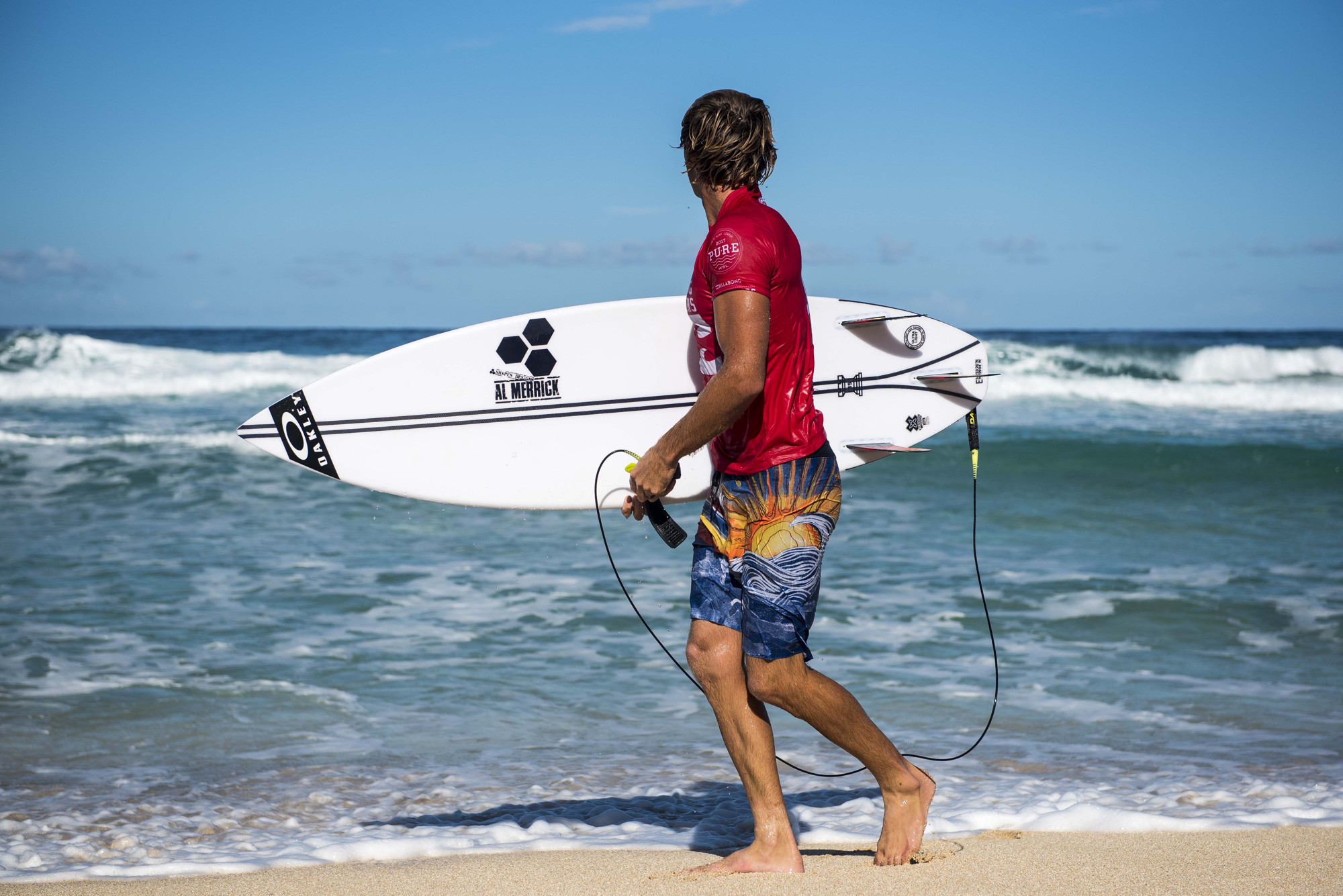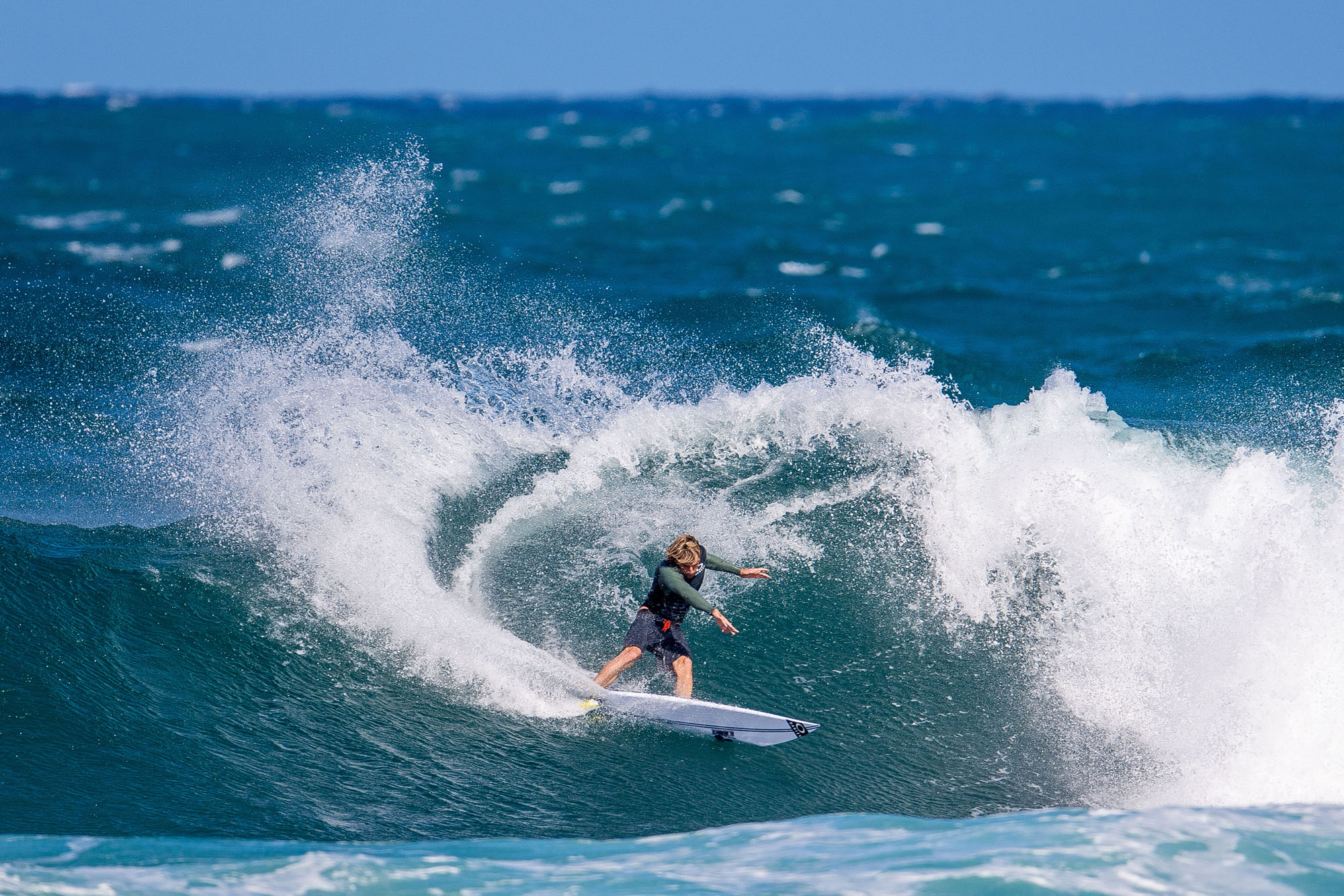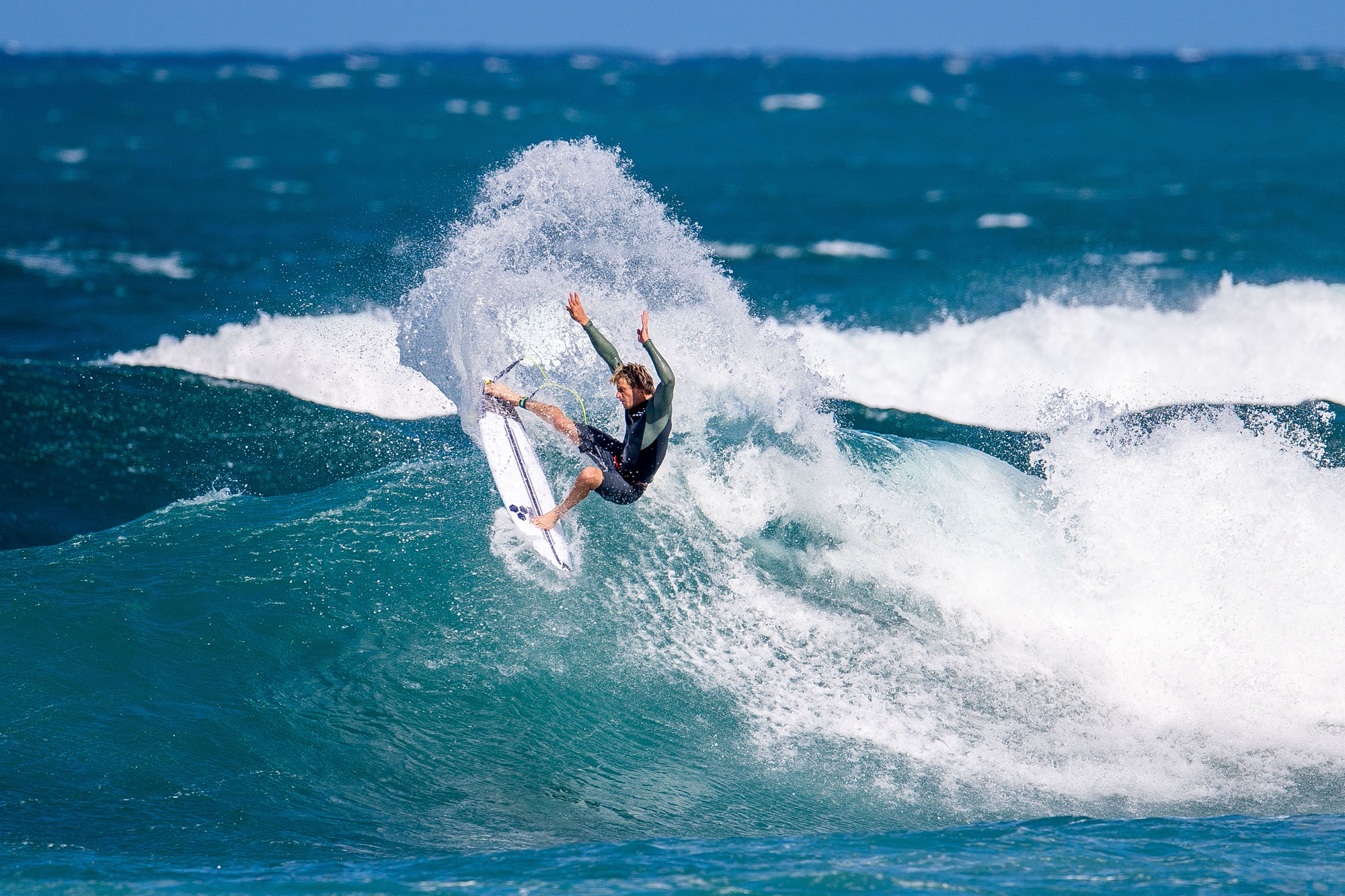New Technology From Channel Islands “The Best Flex I’ve Felt” – Seabass
Meet Spine-Tek (physics degree optional).
Channel Islands is without a doubt one of the most trusted names in surfboard construction. Over the years they’ve had the best riders — Kelly, Dane, Jordy, Curren — and have won, on more occasions than not, the SIMA Surfboard of the Year award (8 years in a row at one point).
But what’s the best thing about CI? While their boards have thrived underfoot actual world champions, the CI team still puts extreme diligence into their average-wave, average-surfer crafts. Machado’s Fishcuit was huge in the early 2000s, Conner’s Fred Stubble has been a hit over the past five years, and Dane’s Dumpster Diver unequivocally changed the game of smallish wave surfing. And these boards worked not just for the pros, but for the chippies and mailmen as well.

Nu tech, same powerful logo, under the arm of Mr Sebastian Zietz.
But Channel Islands knew that progression didn’t stop at design. Rockers, concaves, and outlines are wildly important variables to a surfboard’s functionality, but when you add construction into the mix, the possibilities for growth are endless.
It was this logic that led the CI team to create Spine-Tek — A stringerless flex technology that uses a band of fiberglass and resin down the centre of the board to create unrivalled elasticity and spring. Go ahead, hit play above and give her a look.

Energy can never be created or destroyed, it simply gets redirected…
Not to get overly nerdy, but the theory behind Spine-Tek is this: using the principles of elastic and kinetic energy, CI’s composite band loads up (elastic) and explodes out of maneuvers (kinetic) with more speed and precision than a stringer-based surfboard. The “Spine” itself, made from a unique fibre and resin composition, is both lighter and stronger than a classic timber core. Best of all, this tech can be applied to EPS and PU surfboards. This is not often the case for alternative construction crafts, which are typically tied to EPS foam. (We know some of you purists can’t stand epoxy!)
But enough of the quasi-sciencey stuff. What you really need to know is this:
-Spine-Tek is less input, more output: because of the controlled flex, even an easy bottom turn will provide ample speed for a solid bang off the lip. In this way you can conserve your energy for the actual maneuver rather than using it all just to get there.
-Spine-Tek is strong: You could break a wooden stringer with a half-hearted karate chop, if you wanted to. Alternatively, CI’s Spine-Tek composition will literally bend in half before it snaps. Of course this doesn’t apply to the actual foam of the board, but that’s another issue entirely.
-Spine-Tek is small wave performance with a choice: Some surfers won’t ride anything other than epoxy because of its speed, weight, and liveliness. Other surfers won’t touch an epoxy board with a 10-foot pole, because it’s just too damn buoyant. Spine-Tek is a small-wave construction that applies to both EPS and PU constructions, so everyone can overachieve in those dick-high days.
And we don’t know about you, but where we’re from, there’s a lot of dick-high days…

“The best flex i’ve felt for an epoxy.” – Seabass.





Comments
Comments are a Stab Premium feature. Gotta join to talk shop.
Already a member? Sign In
Want to join? Sign Up